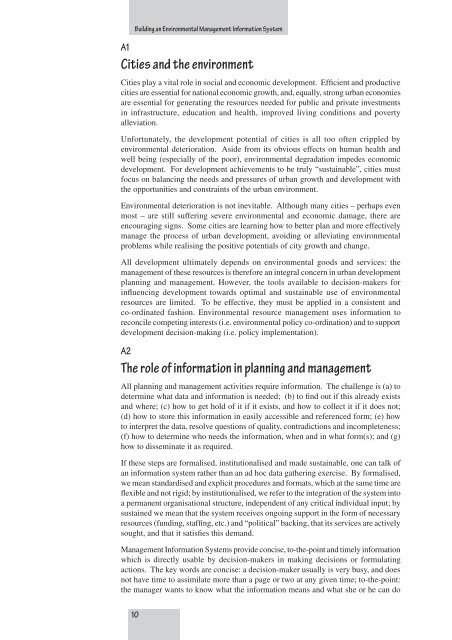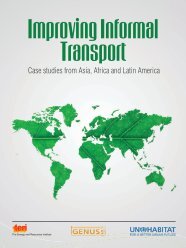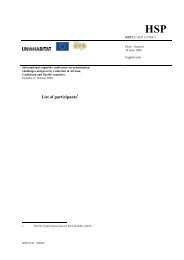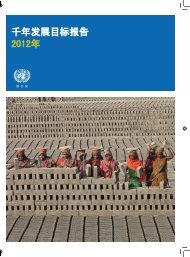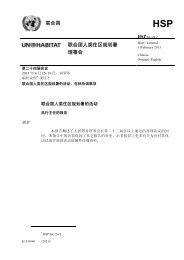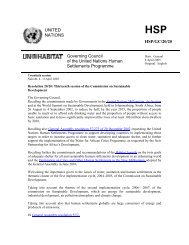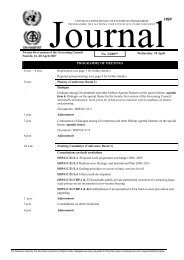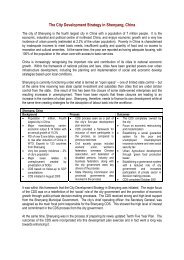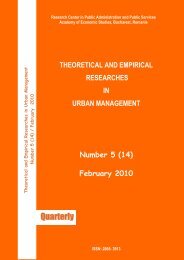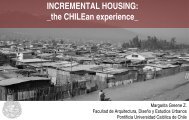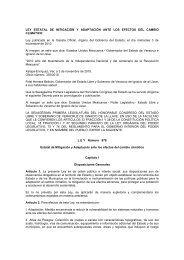EMIS - UN-Habitat
EMIS - UN-Habitat
EMIS - UN-Habitat
You also want an ePaper? Increase the reach of your titles
YUMPU automatically turns print PDFs into web optimized ePapers that Google loves.
Building an Environmental Management Information System<br />
A1<br />
Cities and the environment<br />
Cities play a vital role in social and economic development. Efficient and productive<br />
cities are essential for national economic growth, and, equally, strong urban economies<br />
are essential for generating the resources needed for public and private investments<br />
in infrastructure, education and health, improved living conditions and poverty<br />
alleviation.<br />
Unfortunately, the development potential of cities is all too often crippled by<br />
environmental deterioration. Aside from its obvious effects on human health and<br />
well being (especially of the poor), environmental degradation impedes economic<br />
development. For development achievements to be truly “sustainable”, cities must<br />
focus on balancing the needs and pressures of urban growth and development with<br />
the opportunities and constraints of the urban environment.<br />
Environmental deterioration is not inevitable. Although many cities – perhaps even<br />
most – are still suffering severe environmental and economic damage, there are<br />
encouraging signs. Some cities are learning how to better plan and more effectively<br />
manage the process of urban development, avoiding or alleviating environmental<br />
problems while realising the positive potentials of city growth and change.<br />
All development ultimately depends on environmental goods and services: the<br />
management of these resources is therefore an integral concern in urban development<br />
planning and management. However, the tools available to decision-makers for<br />
influencing development towards optimal and sustainable use of environmental<br />
resources are limited. To be effective, they must be applied in a consistent and<br />
co-ordinated fashion. Environmental resource management uses information to<br />
reconcile competing interests (i.e. environmental policy co-ordination) and to support<br />
development decision-making (i.e. policy implementation).<br />
A2<br />
The role of information in planning and management<br />
All planning and management activities require information. The challenge is (a) to<br />
determine what data and information is needed; (b) to find out if this already exists<br />
and where; (c) how to get hold of it if it exists, and how to collect it if it does not;<br />
(d) how to store this information in easily accessible and referenced form; (e) how<br />
to interpret the data, resolve questions of quality, contradictions and incompleteness;<br />
(f) how to determine who needs the information, when and in what form(s); and (g)<br />
how to disseminate it as required.<br />
If these steps are formalised, institutionalised and made sustainable, one can talk of<br />
an information system rather than an ad hoc data gathering exercise. By formalised,<br />
we mean standardised and explicit procedures and formats, which at the same time are<br />
flexible and not rigid; by institutionalised, we refer to the integration of the system into<br />
a permanent organisational structure, independent of any critical individual input; by<br />
sustained we mean that the system receives ongoing support in the form of necessary<br />
resources (funding, staffing, etc.) and “political” backing, that its services are actively<br />
sought, and that it satisfies this demand.<br />
Management Information Systems provide concise, to-the-point and timely information<br />
which is directly usable by decision-makers in making decisions or formulating<br />
actions. The key words are concise: a decision-maker usually is very busy, and does<br />
not have time to assimilate more than a page or two at any given time; to-the-point:<br />
the manager wants to know what the information means and what she or he can do<br />
10


